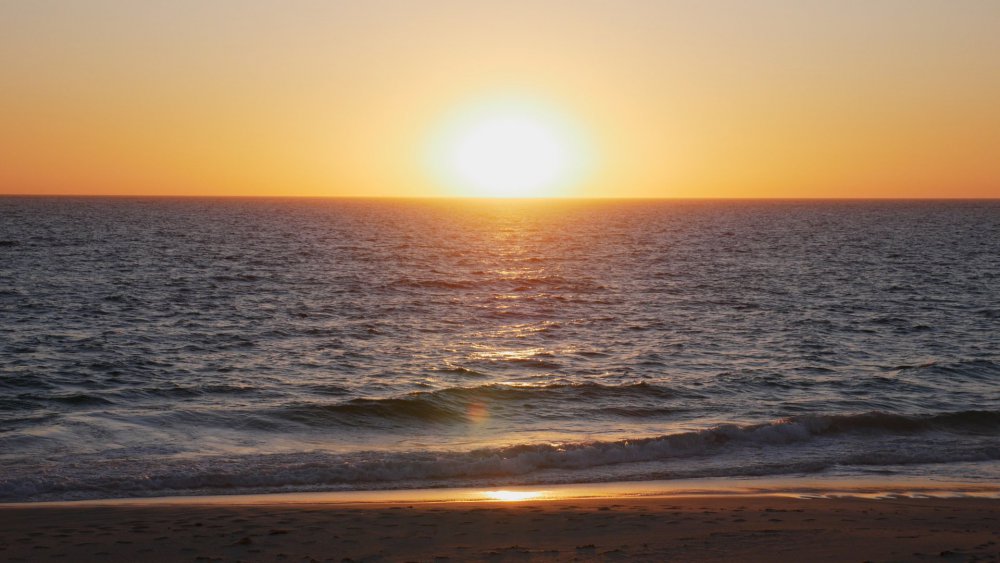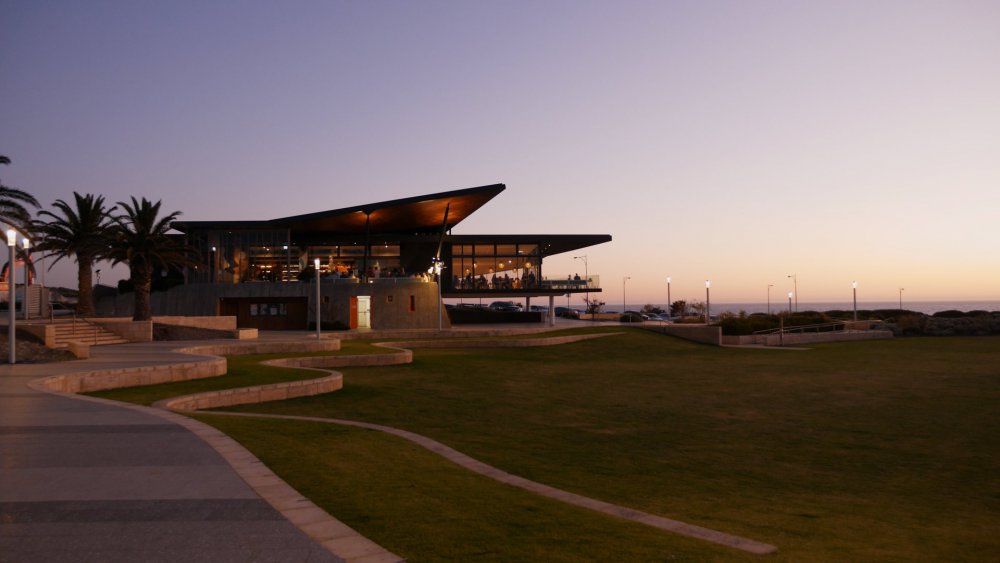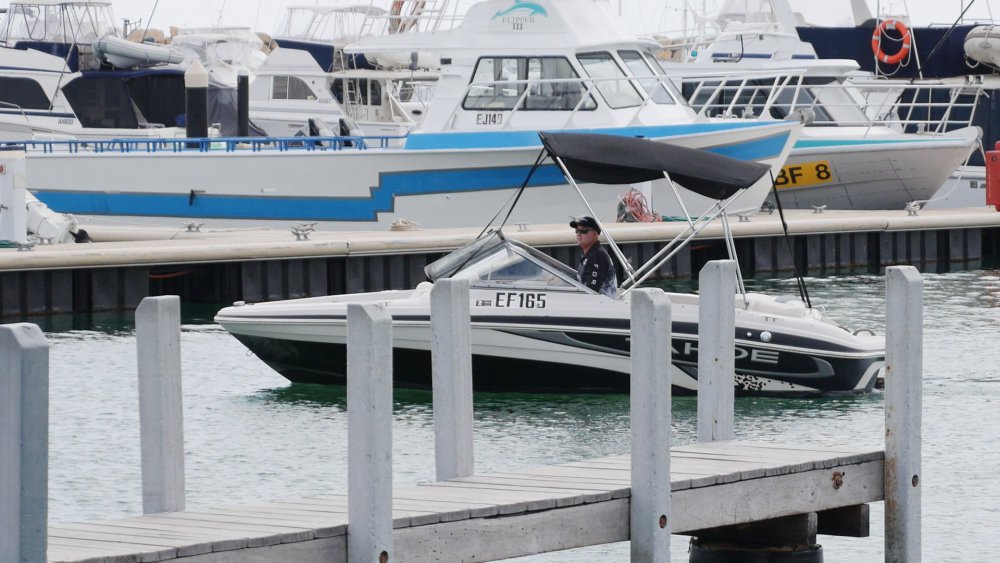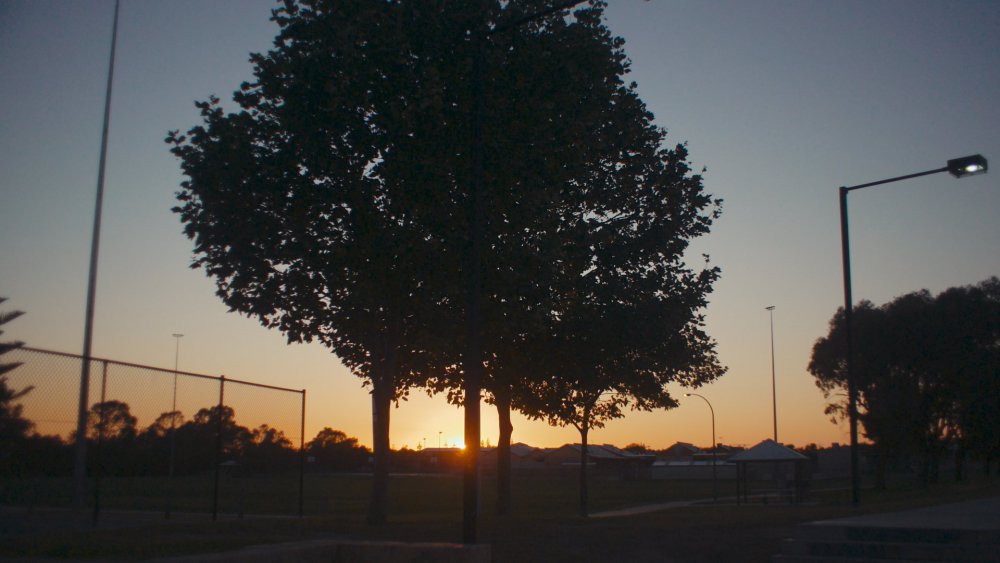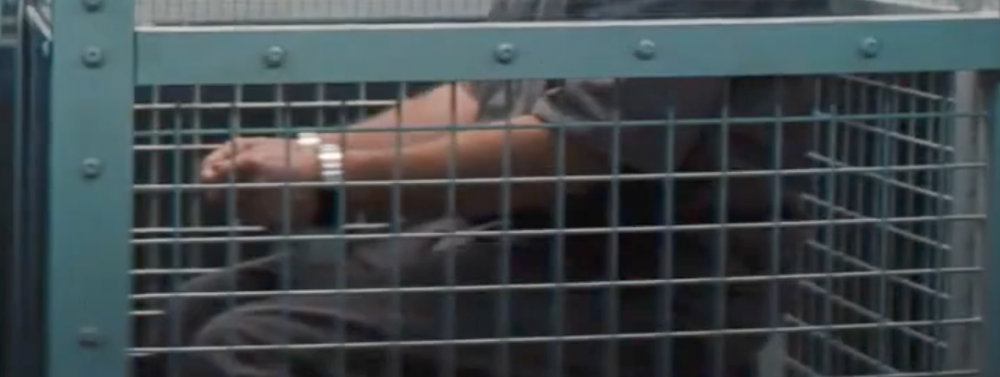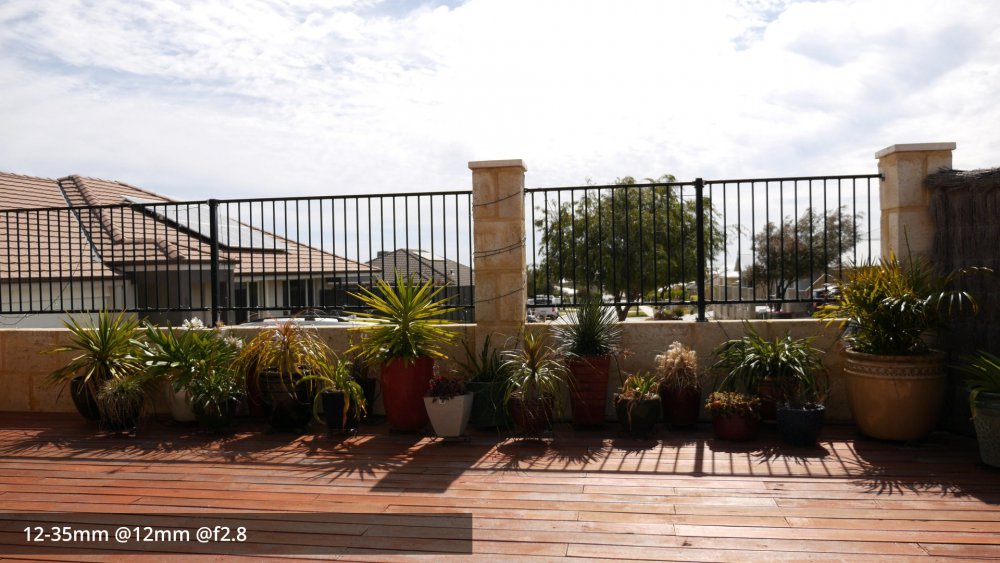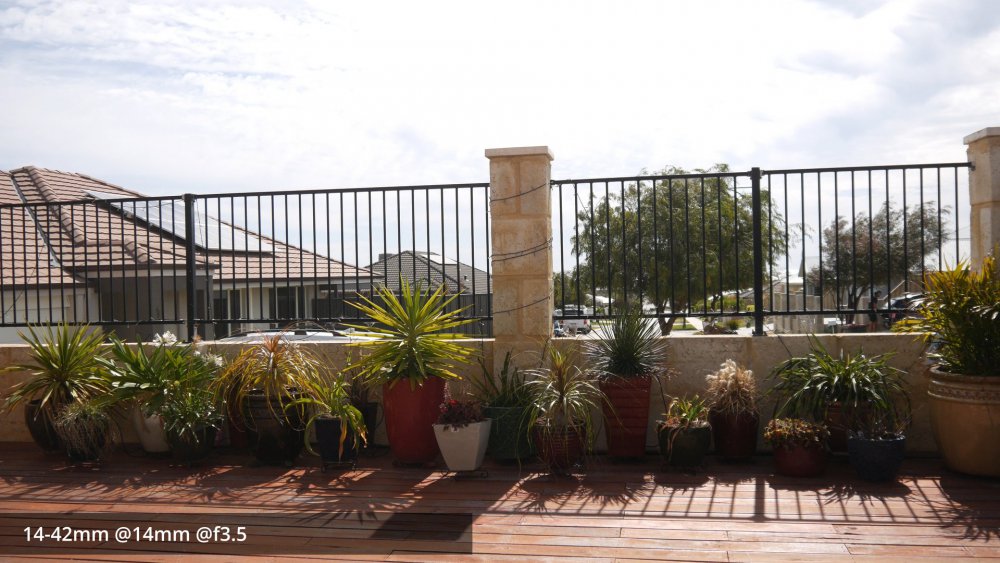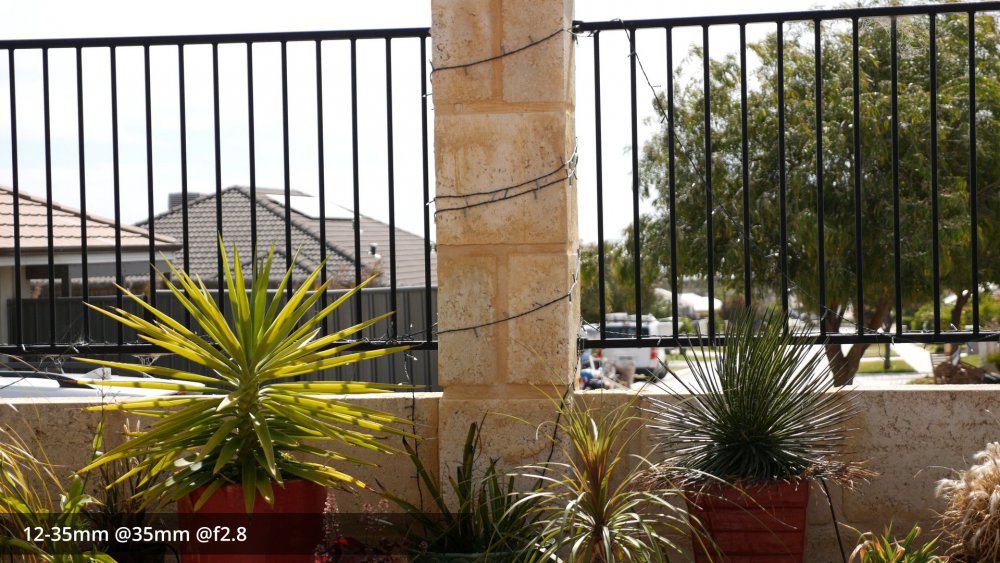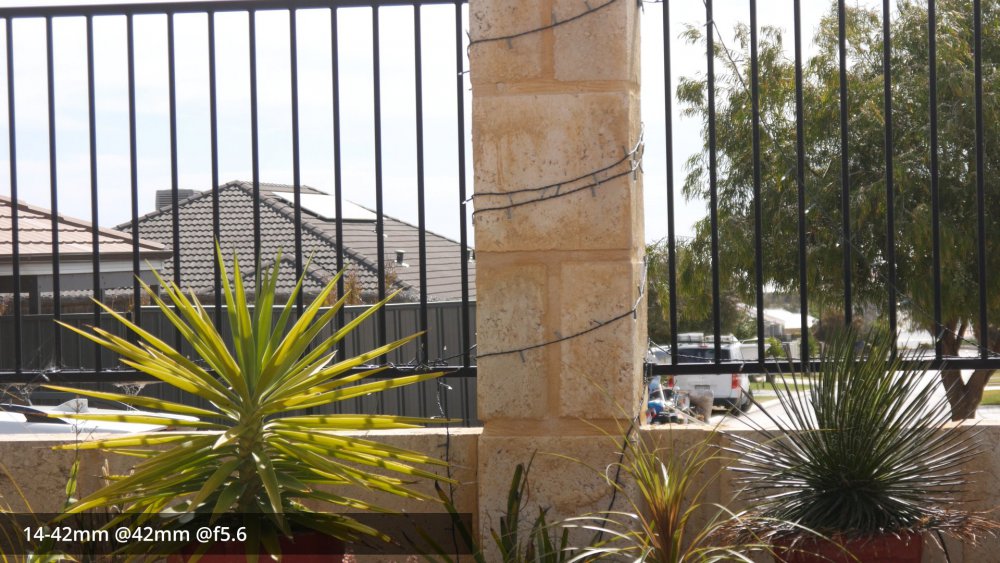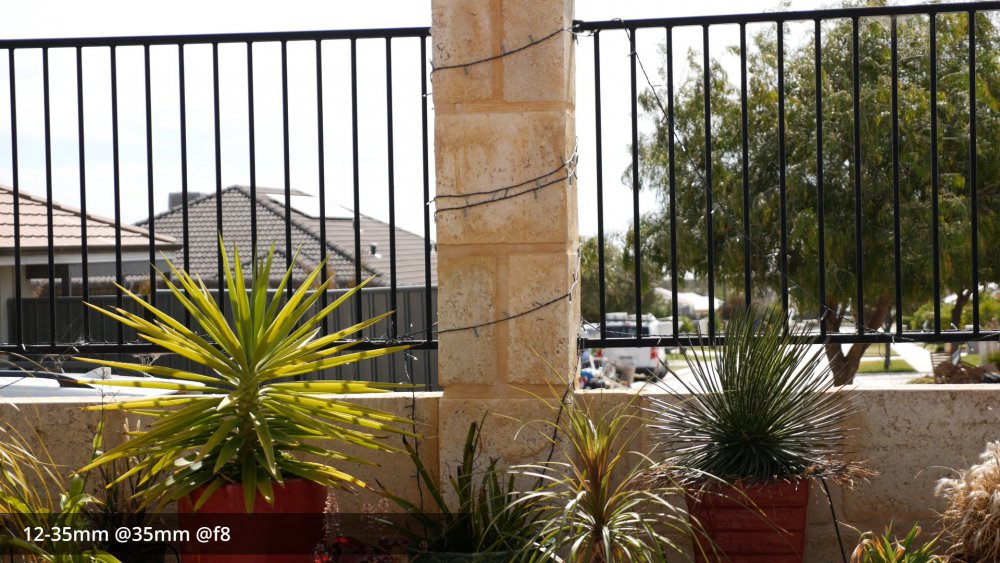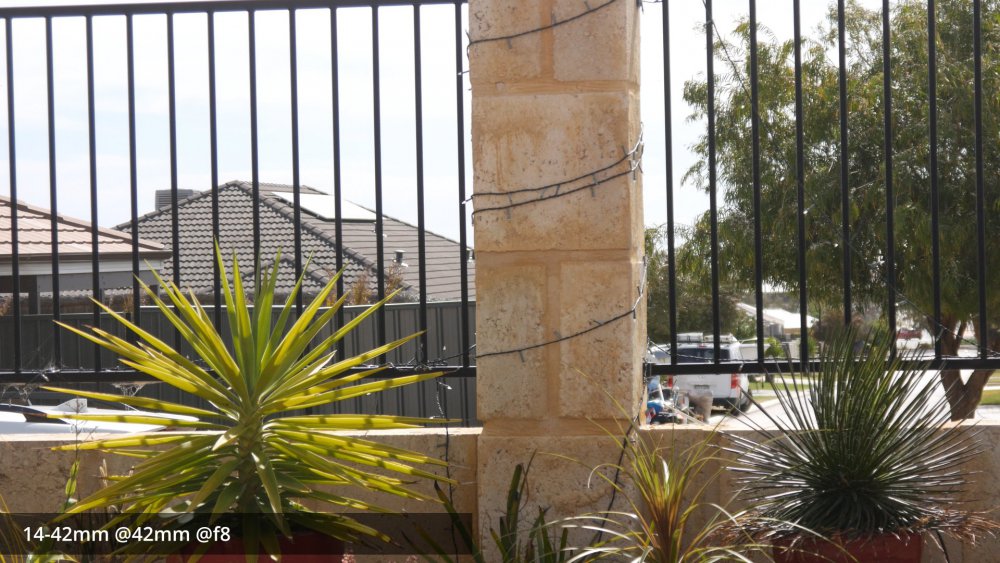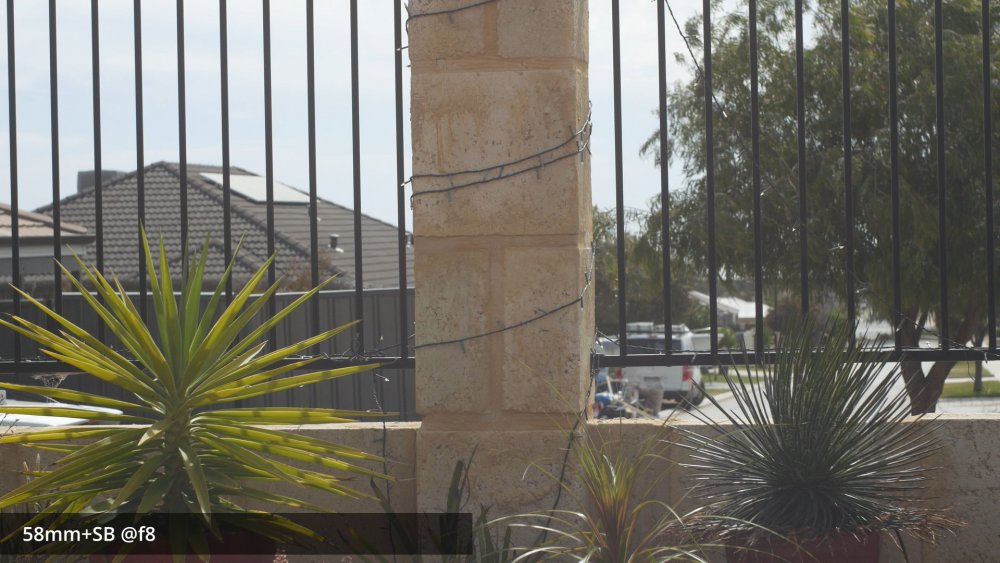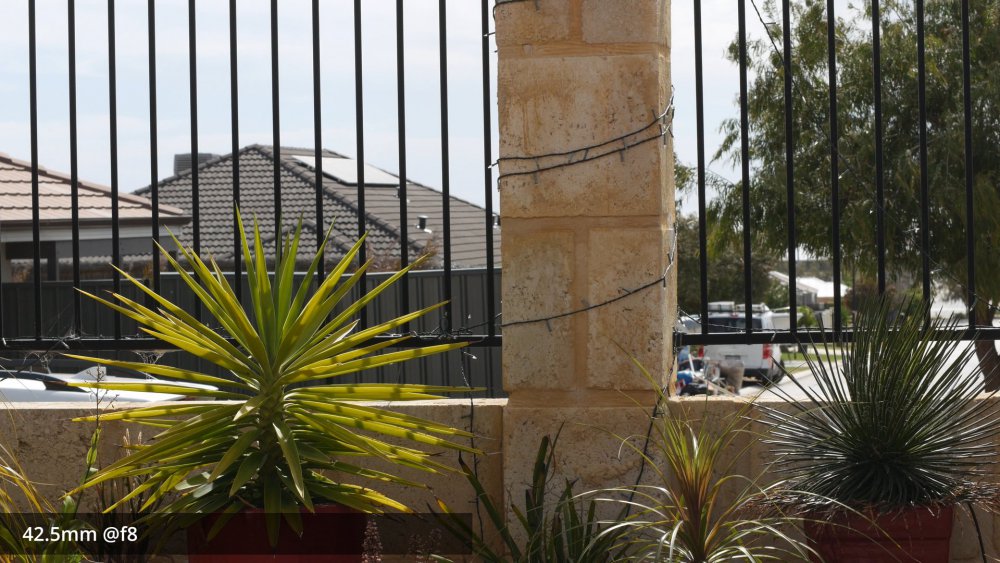-
Posts
7,988 -
Joined
-
Last visited
Content Type
Profiles
Forums
Articles
Everything posted by kye
-
The more I use the GX85, the more I like it. I've taken it out with the 12-35/2.8 a couple of times now, including a street festival on the weekend where I got a bunch of shots of a friends kids running around non-stop, and the camera and lens kept up, even at F2.8 the whole time. Some beach visit sample images from the 12-35mm F2.8 (probably wide open).. and the festival outing, also 12-35mm f2.8 wide open, but this includes some shots using the 2X zoom mode too.. and a couple from an outing with the Cosmicar 12.5mm F1.9 wide open (and cropping into the image)... The 12-35mm images are almost SOOC using the Natural profile (I hadn't put Cine-D on yet), just with some slight tweaks in post, but the Cosmicar ones above have been graded under a Kodak 250D / 2393 emulation process, which did surprisingly little to the colour actually. The more I use the 12-35mm the more I appreciate a zoom lens for just getting shot after shot in fast situations, which is pretty much the key to having lots of options in the edit and keeping an edit fresh with lots of different types and compositions of shots. I'd really like a longer lens as I got quite a few shots at 35mm with the 2X engaged, so I'm contemplating the 12-60mm F2.8-4 which seems to be a good match from the reviews I've seen. Curious to hear others thoughts on this. I found the Cosmicar a little challenging to work with as I composed for the screen and was then surprised in post with how much crop I needed to apply, so had a few shots where I was chopping peoples heads off etc. I've ordered a cheap 28mm F2.8 m42 lens to go with my m42 speed booster, which will give a 43mm FOV, which is a little tighter than the 12.5mm Cosmicar which gives about a 35mm FOV once you crop into the image circle. I'll have to see how I go with it. I'll need a 22mm lens on the SB to give a 35mm FOV and those aren't super common in m42 mount! The alternative is my 17.5mm Voigtlander which is 38mm on the GX85 but isn't exactly vintage, so I'd have to look more seriously into filters to get similar flare characteristics (which is the part I love about vintage lenses). The stabilisation is really good, and in combination with the 12-35 is just spectacular, and my regular camera is a GH5 so I'm guessing I'm not easily impressed. It really makes me feel like shooting. Great stuff!
-
Looks great, but looks just like Magic Lantern on the 5D, only with a higher resolution / less cinematic image. You could downscale, but it's a small bump for a large price increase. IIRC my new GX85 gives you zebras, focus peaking and waveform at the same time. For $600, which includes two lenses. and it's not a dedicated video camera either. LOL. Canon.
-
Imagine a telecommunications company that had an internet department and a telephone department. They decided that the internet department should be segmented from the telephone department so they release modems for computers only and refuse to do wifi because then it could be accessed with smartphones, and they refuse to release smartphones because they believe that telephones should be used for voice calling and SMS messages only. How do you think they'd go? World leader in telecommunications? Would this segmentation bring them great fortune? Yeah.
-
Business models that can't keep up with reality inevitably die. The archives contain millions of bankruptcy filings from businesses that would have been successful if the world was different. In todays world, convergence will kill any business that tries to maintain segmentation. This is basic economics. Celebrating such things is little more than writing poetry about decay and death.
-
That would be the best option. Just like allowing people to choose between shutter speed and shutter angle.
-
So DJI really IS leading the cinema camera market! Nice 🙂
-
Yes, they're both valid, although I'd argue that an analytical approach is likely to get a better result, faster. There are hundreds of variations of each focal length, maybe thousands for common ones, so the likelihood that you would stumble onto the best one for your preferences, or even one in the top 5, just by randomly looking at Flickr or whatever is pretty small. If, on the other hand, you worked out that you like a certain quality of bokeh, then come to understand that the bokeh is a function of the optical recipe, then understand the history and usage of that recipe, then you're likely to be lead relatively quickly to potentially unknown resources where lists of lenses you've never heard of that have this trait are catalogued. This might seem like a hugely specific thing that no-one actually does, but optical recipe is hugely common and is referred to almost as a matter of course in lens reviews - this is when reviews say a lens has "11 lens elements in 9 groups", and maybe mention how many are aspherical. I'm not sure if you are aware of this, but I know that I wasn't until recently. Since I worked it out, I realise that this is commonly included in lens reviews and specs, and there are many common lens formulas that get talked about regularly too, like Petzval, Tessar, Distagon, etc. There are equivalents for other lens design aspects as well. It just depends on what your goals are, if your goals are to look at lots of pictures and maybe get the best lens from a random selection of images then go right ahead, but if your goal is to get the best lens for your application and tastes then a more methodical approach is going to be more effective and hugely faster.
-
So there you go. GH5 not succumbing to the lowered standards that Sony only stoops to on their consumer cameras and not on their flagship cinema camera, and which ARRI etc do not consider at all!
-
An addenda to the above. Think about the crap that people dump onto kit lenses and the mythical attributes they give to other lenses like the Helios and the 12-35/2.8 etc, and then compare that with the images I posted at the start of this thread. If all you are doing is "browsing for pre-packaged solutions" then the conventional wisdom is radically misleading. This "browsing" is the path to overpaying for what is trendy, not developing your own style, and likely using the wrong tool for the wrong job and not even knowing that it could be different.
-
Actually, there is such a thing as a mathematically perfect lens, and any deviation from that is theoretically defective, and therefore all character is made from aberrations. This isn't a criticism, and it's not pedantic either - I say this because it's helpful. Once you realise that all character in a lens are deviations from perfection then it frames all of these into the same category. Everyone agrees that some aberrations are good and others are definitely not, so then it just becomes a matter of taste. This gets us away from the idea that there are two categories called "character" and <insert bad word here> and then arguing over what things fall into which categories. It also helps in understanding what character is. If you understand that it's made from particular elements that are measurable then you can start to narrow down what they are, understand where those might come from, and understand how one can select for them, potentially while removing the aberrations that are not to your tastes. I've gone a decent distance down the lens rabbit hole and have a passing understanding of some of the aberrations that I like, but it's ridiculously deep. Here are a couple of videos from a pair who are trying to write a book about the subject, which apparently is still years away and current drafts are over 1000 pages! This is part of a larger theme around the creative elements of film, and where Steve Yedlin put it really well when he said: Source: http://www.yedlin.net/OnColorScience/ He was talking about colour science and not about lenses specifically, but the principle holds. Far too many of us are just choosing from pre-packaged solutions and not understanding the smaller attributes. Right at the opening of the first lens video Christopher Probst says "yeah I've got to be careful what I talk about because I'm still buying lenses [from ebay] too". So, what does this tell you? The guy who is literally writing the book on lenses knows enough to be buying lenses from eBay that he thinks are undervalued and doesn't want to give the game away about them until he's bought the hidden gems he's found... The big take-away for me from those two videos was that the optical recipe was a thing that drives a lot of my interest, along with diffusion characteristics of the various coatings. These are particularly useful things to me because: Knowing I prefer older and simpler optical recipes means that instead of trying to buy CZ primes (which are very costly) I can buy modern copies from Chinese factories that are made very well but are much more reasonably priced Knowing I prefer certain levels of diffusion from the lens coatings (and a certain amount of flaring) means I can investigate filters that emulate these characteristics Knowing how to read the optical properties of lenses through MTF charts, and also knowing that perfect isn't actually desirable, I can draw parallels between Zeiss Super Speeds and Cooke Panchros (lenses that no-one here can afford) and the Helios 44 lens that everyone here can afford, and then understand the parallels between those and the modern lenses available from China that I previously mentioned Knowing these things is actually empowering in a very real and practical way. Taking a one-dimensional view of lenses and just separating them into "Good Character" and "Bad" is neither empowering, nor helpful. You said you like to have the lens be more like a partner instead of a tool, this is a way to understand what kind of partner you'd like. If I said that character in people was definable, you might balk and say it wasn't possible. If I insisted it was then you might say you didn't want to know, but you actually do. Imagine the character of two potential business partners below, and then tell me you'd prefer not to know about these and would rather choose at random: Partner A character traits: deceitful, grandiose, manipulative, emotionally unstable, volatile Partner B character traits: indecisive, ambitious, natural salesman, excitable, sentimental Here's the funny thing, those two people could easily present as initially quite similar. They talk big, their story changes a bit over time, they're dynamic, etc. Knowing the traits and being able to read them gives insight. It doesn't take away the mystery though. Knowing everything isn't the only alternative to knowing nothing.
-
ISO isn't universal anyway - ISO 100 can give quite different levels of exposure on different cameras. IIRC Tony Northrup did a test and the different cameras were different to each other, some by quite a lot. Besides, what matters is the native ISO, not the absolute number. ISO 100 on one camera might look great if it's the native ISO of that camera, but might look awful on another where the native ISO for that camera is 800. And shutter speed is a simple primary school fraction isn't it? And how often do you change it? Couldn't you just calculate it and write it down? I'm not really sure where the problems are here, but maybe that's just me. Carry on.
-
I think you've perhaps missed the original point of the thread - how do these things compare in practice. I've delved deep enough into the theory of resolution downsampling in post and the more you look into it the more variables there are and the more that you realise the results cannot be predicted. @Ty Harper is smart enough to not ask for theory-land responses, because (having read their other posts and seen the quality of their work) they have enough experience to understand that theory and practice are two very different things.
-
Are you suggesting that cinematographers won't be able to use the camera because of how a control is labelled? and one that is normally not changed much at that? You don't seem to have much faith in their intelligence!
-
And get PDAF fixed-pattern interference in the image? I don't think so! It's like you didn't even read the preceding comments?
-
Yet another reason the GH5 is still a leader....
-
While I'm no fan of the Sigma 18-35, it can be (with careful consideration) the basis for a nice look. I'd suggest: Diffusion filters (as others have suggested) but be aware there are lots of them and all have different looks so that's worth doing some research into - most brands will provide comparisons of their various products so you can narrow down and then look at real-world reviews Some of the characteristics of vintage lenses can be added in post, including: Softening of the edges (use a mask like a vignette but use a blur effect - experiment with different types of blurs here too - radial vs pinch(?) vs "lens" vs directional blurs etc Chromatic aberrations can be added, either to the whole frame or to the edges using a mask Vintage lenses often vignette Vintage lenses often have pincushion distortion - where objects on the edges get curved like a slight fish-eye effect - this can often be introduced with a "lens correction" slider which are common You can even put an oval shape over the front of the lens which will make your bokeh oval-shaped (at least when you have the lens wide-open) but bear in mind it will lower the light coming through the lens and depend DoF slightly With the BM S16 cameras they tend to be on the softer side due to 1080p sensors and lock of sharpening so having a tack-sharp lens isn't a bad thing per-se, it's just on the bland side. It used to make me mad too, but now I realise that it's all a scam. They say the biggest lies are the most successful and I think it's true here too. Have a look at this: and I don't mean "see how large the budget is" - I mean go shot by shot, pause each one, and actually look at the image. If I can take a small liberty for educational purposes, have a look at the frame at 14s, it includes the main star of the whole movie looking like this: and then imagine what DXOMark would say if they tested this lens: This single frame reveals the truth about the cinematic look: The video is uploaded in 2K - because the film is projected in 2K in cinemas The frame has edges that are blurry, even in 2K (see above snippets) The frame has significant pincushion distortion (look at the "straight" lines on the edges of frame) It has quite deep DoF It has spectacular colour Checkmate YouTubers! Of course, I say that sarcastically because the reality is that they've checkmated all of us years ago when they started talking about sharp lenses and 4K and we didn't just laugh and skip the video and watched something remotely sensible instead. I mean, that single frame is so optically poor from a technical perspective that most forum nerds would recommend throwing that lens away, and yet it was used in a key scene in a $250M movie that has grossed $700M+ worldwide. Turns out we didn't need MORE pixels, we needed BETTER pixels. The proof was in the movie theatre the whole time and we never called their bluff. Or even been to a movie theatre in the last 30 years..... Why? The DoF is a function of focal length, so if I take my 12-35/2.8 lens, set it to 12mm f2.8 and focus on an object it will have a different DoF than if I set it to 35mm f2.8 and focus on the same object from the same camera position. DoF is variable, even with constant aperture zoom lenses. In fact, it's probably less variable on a variable aperture zoom. You said you don't really zoom while filming, so constant exposure isn't really an issue from that point of view. If you've zoomed and want to match exposure then just adjust your ND - you've adjusted your composition already so a twist of an ND isn't a big deal. If you're shooting with variable apertures and matching exposure with ISO and wanting to match the noise profile then just get familiar with NR - most cinema cameras have noise (even at their native ISOs) that would make any videographer CRY. Professional colourists know about NR and how to use it, and it will be used on almost every professional movie or TV show you have ever seen. Videographers complain about noise in their images and it just shows they literally don't know the first thing about high-end productions (and I mean first thing, because NR is usually the first node of a professional colourists workflow). Not sure what specific post you're referring to, but most kit lenses are ~24-70, most secondary zooms are 70-200, and most systems have a 16-35 equivalent. The numbers all look different between brands and mounts etc, but they mostly boil down to those ranges. I'd say from just that statement alone you're doing far better than most forum peeps, because: You seem to know what kind of shooter you are You seem to actually shoot (armchair critics aren't a fan of the 12-32mm lens) You seem to understand how the equipment you have relates to what your requirements are ("nice and portable" isn't a think armchair critics who don't shoot say) Sadly, this makes you far ahead of the curve. Most of camera internet discussions are about specs, with people recommending you change what and how you shoot in order to match the latest equipment rather than the other way around, and TBH mostly it's just the blind leading the stupid, or these days the shills leading the gullible to part with their money!
-
Not exactly sure how much footage I have, but I've almost filled my 12Tb drive and that doesn't have everything on it. I think that's right anyway. The problem is that I've shot a bunch of trips and events and I just want to pick up my laptop and think "I'll edit project X for a bit" and not want to wait an hour or more as it copies. Plus I don't want to have to string a blue cable through the house just to edit. My son did that for some time to improve his ping times for gaming, and let's just say it's not something that brings hope and good cheer to everyone! It sounds like the tech just isn't quite mature yet. I can wait.
-
Yes, this post was deliberately tongue-in-cheek, but it's also completely true and not joking in any way either. @Emanuel told me I'm allowed to disagree with myself and it makes me a poet instead of less credible, plus I can just randomly tag people in brand new threads, so I'm doing that too. You're welcome internet. Now you have no excuse for not getting out there and making something wonderful. (You never really had any excuses, so maybe you have a negative number of excuses now? There I am, being poetic again..) Enjoy.
-
So, turns out that hitting Command-Return instead of Shift-Return submits the post. Who knew? anyway, Part Two. They have smaller apertures. This might seem to be a disadvantage, but maybe not as much as you'd imagine. Firstly, smaller apertures are easy to focus, so less shots with missed focus. BOOM. You're welcome. Tell Panasonic (or whoever) I just upgraded their AF. See if you can tell the difference in DoF between these? No? Well, F2.8 to F3.5 isn't much difference. OK, let's get less fair.. What about these? Sure, it's a small difference, but that's a two whole stops. It's also many many hundreds of dollars. Low light is definitely a difference here, that's true, so the kit zoom isn't really a low-light monster, but these lenses are practically free so you can't have everything!
-
Everyone seems to want high-speed high-resolution high-performance glass... is it sharp wide open? what does DXO say? how good is the bokeh? these questions are all over the net. OR.. Everyone seems to want vintage glass with their lovely coatings and swirly bokeh and corner softness... how does it roll-off the highlights? how is the edge softness? what is the colour rendering? how does it render skin? I recently tested a bunch of my lenses and I'm wondering if maybe they're wrong. Maybe cheap, modern, variable aperture, zoom lenses - the kit lens perhaps - is the best lens available. Why might I say such a thing? Here are some thoughts. They're cheap. Obvious, but true. In fact, if your camera was cheap enough, then you probably own one already - or if you own multiple cameras maybe more than one! If you don't already have one, but you know people who are into cameras, then you can probably get one off them for free. Best, in the real world (which is where I do all my shooting), often means most value. They're flexible and fast to use. They can zoom, which makes them flexible. I don't care how fast you are at changing lenses, I can turn a zoom ring faster than you can change primes. In fast situations, it can mean the difference between getting the shot and missing it. ENG cameras all had zooms, not a bag / case of primes. They can improve your edits. In slower shooting situations that flexibility can mean you get shots that you wouldn't otherwise get. Maybe it's not worth changing lenses to grab that shot, so you just don't, or maybe the composition isn't quite right because it falls between two prime focal lengths, or maybe the primes are just too heavy to carry all that way. Cheap zooms are lightweight plastic - built for speed. This means that when you get back to the editing room your kit zoom will give you more options. You'll have taken risks in shooting and some will pay off. The saying "spray and pray" is a deep insult which encourages people to only shoot what they know will work, but the phrase "happy accidents" betrays that sometimes we don't know what we'll want until we see it, in which case why not deliberately seek out what is new and unknown? They tell you that shooting with a prime will make you slow down and think about your compositions - maybe we should speed up and think less? Operate on instinct. If big-name directors are operating on instinct then why must the rest of us slow down and think more? The zoom will unlock the creativity that primes are actively blocking us from achieving. They can be optically poor. (Just like vintage lenses) Here's a little joke.. "What do you call a vintage lens with high optical performance?" "A modern lens" Vintage lenses are often quite crap. I'm meant to say "have lots of character", but in reality that character is just optical defects that we happen to like. Here are four images from my recent GX85 lens test. These are SOOC and not shot in controlled conditions, but the principle remains. So what are we looking at here? Well, there are two lenses where the colours are vibrant, they make the 100Mbps 4K (on a 1080p timeline here) look very sharp, and they are the Panasonic 12-35mm F2.8 zoom and the Voigtlander 42.5mm F0.95 prime. These are by far the most expensive lenses. The 58mm is the Helios 44M, a close relative of the 44-2 (the images are practically identical) and it's got that vintage look we all love. In fact, the diffusion from the vintage coatings improve the dynamic range of the camera by lifting the highlights. Despite being very sharp, its diffusion (coatings at work again!) takes the edge off the edges, giving a slightly organic look - it looks high-resolution but not high-sharpness. This is in the direction of how resolution from RAW-shooting cameras looks - there but understated. Here's the problem with the Helios though, it flares uncontrollably in direct sunlight. It's so prone to off-axis lighting that it's difficult to work quickly with. Plus, it's a prime and subject to all the above issues. Then, the mighty 14-42 kit lens. It has some of that vintage look going on. It's kind of like somewhere between the Helios and the other two. It raises the shadows a bit, but isn't uncontrollable in direct sun, and the edges are a little softer. A happy medium perhaps? It's also a zoom, has OIS, and if you break it you can just go get another one from a friend or on eBay or for $5 at a market somewhere with a GF2 with a dead battery. End of part 1....
-
This video (posted previously) is really the only thing I've shot with the Micro that is edited nicely and has been cleared for general distribution by the boss... As lovely as these cameras are (BMMCC and OG BMPCC) they're too finicky / slow for most of what I do, which is why I've gotten my GX85 and am now playing with that. For reference, I shot a little video of my wife and I riding down to the beach and looking at the sunset, similar to this video, but many shots were filmed while we were riding and my main concern was not falling off while filming and riding one-handed through patches of sand while the pedal-assist on the e-bike was rather abruptly turning its helping on and off. Situations like that aren't really the use-cases for a cinema camera!
-
That's my current process, but I was thinking about switching. I've started shooting 1080p ALL-I on my GH5 so they edit beautifully on my laptop, but the file sizes are actually larger so are definitely still prohibitive, especially as I'm working on multiple projects at once, plus the Mac Mini I'd get would be the M1 which should be able to handle the IPB stuff I've been shooting for years now. If you have machines that can edit the native files then getting away from managing a proxy workflow, and not rendering proxies either, would be great. With Resolve I approach editing in a much more integrated way, rather than the sequential approach of old. For example, here's a few scenarios that I can't do while editing with proxies: if I'm selecting clips then I want to know if I missed focus on one I might also want to know if a clip can be stabilised sufficiently to rescue it or maybe I want to know if it can be stabilised over a particularly big bump, because if so then I'll include the shot for longer in the edit, which means I change the pacing of the edit and maybe include or drop other shots, so that effect would ripple through the edit (if you'll pardon the pun!) Often people think of editing as a low-resolution activity and then colour grading as a higher resolution activity, but to my work, where often a lot of it is scenic and often a lot of it is being filmed under relatively difficult situations, the visual of the shot may well be borderline and knowing that impacts the creative process. The alternative is just to have the Resolve database and footage on an enormous SSD, but it would cost many thousands of dollars to store all my active footage on SSDs, whereas for almost the same funds I could probably get a Mac Mini and a RAID controller to work with my spinning disks which would be fast enough with an SSD cache. The bottleneck, of course, would be the wifi, which leads to this thread.....
-
The reason that I ask is that it's not easy to calculate. Here's a summary from https://www.speedguide.net/faq/what-is-the-actual-real-life-speed-of-wireless-374 So in theory, with 802.11n and a fancy router (which I have thanks to my son who is into gaming), you could be getting multiple channels of 150Mbps. However, the challenge comes in video editing that it's not just a straight throughput. For an ALL-I codec, to render the first frame after a cut, this has to happen: your computer has to open the file from the NAS your computer has to read the file type and codec and understand the structure of the clip your computer has to request the part of the file that contains the first frame Then your computer can decode that first frame. For an IPB codec, to render the first frame after a cut, a lot more has to happen: your computer has to open the file from the NAS your computer has to read the file type and codec and understand the structure of the clip your computer has to find the part of the file that contains the nearest keyframe before the target frame your computer has to request the part of the file from the prior keyframe all the way to your target frame Then your computer can decode the keyframe, then all the frames between it and the target frame. Depending on the density of keyframes, the first frame after each edit point might actually require several seconds of video to be transferred, which will obviously cause a big lump of data to get in the way of smooth transferral of the stream. So, basically, not really possible yet. Wired ethernet can be commonly had at Gigabit speeds (1000Mbps), and higher, which suggests that the above might be possible if your files are a smaller percentage of that bandwidth, say, under 300Mbps. But that doesn't help me edit in the lounge while my wife watches TV 😂😂😂 Thanks all.
-
Huh?



